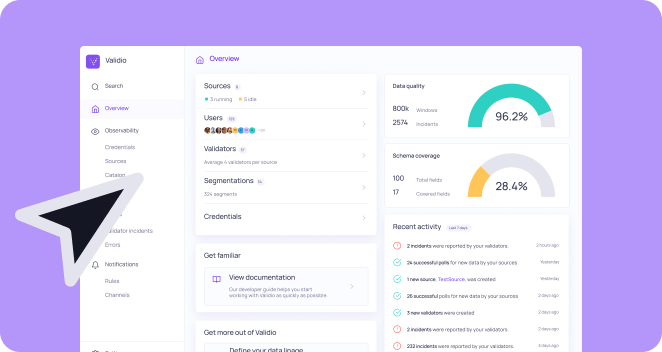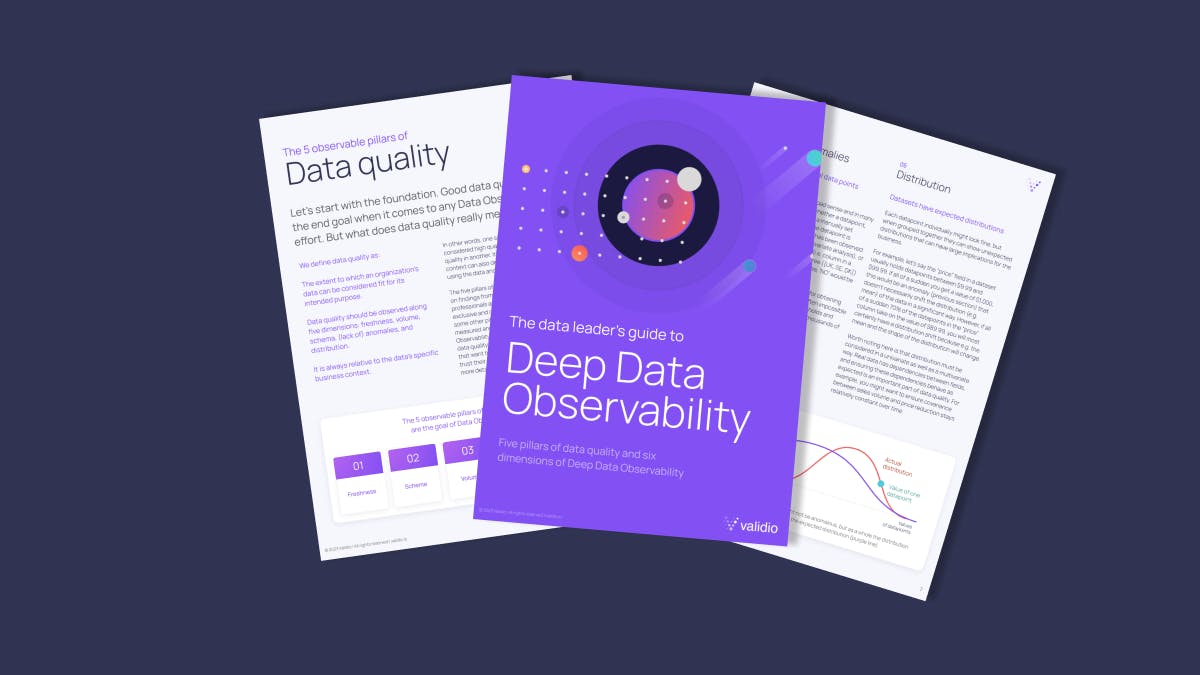A must-have guide to Data Observability
Most data leaders agree that data quality is important. But what does data quality really mean, and how can Data Observability get you there?
In the Data Leader's Guide to Deep Data Observability, we guide you through:
- How you can improve data quality through data observability
- What pillars of data quality data leaders should measure
- How Shallow Data Observability differ from Deep Data Observability
- What you should keep in mind when evaluating data observability tooling

Thank you!
Check your inbox, we've sent you a link to access the full guide. Happy reading!
A guide to setting up your first data quality and observability rules


